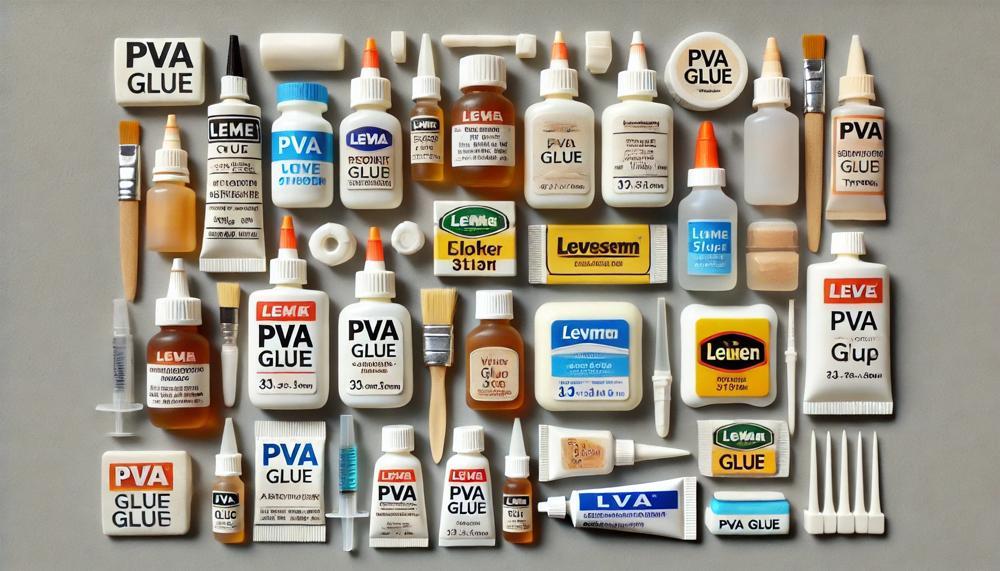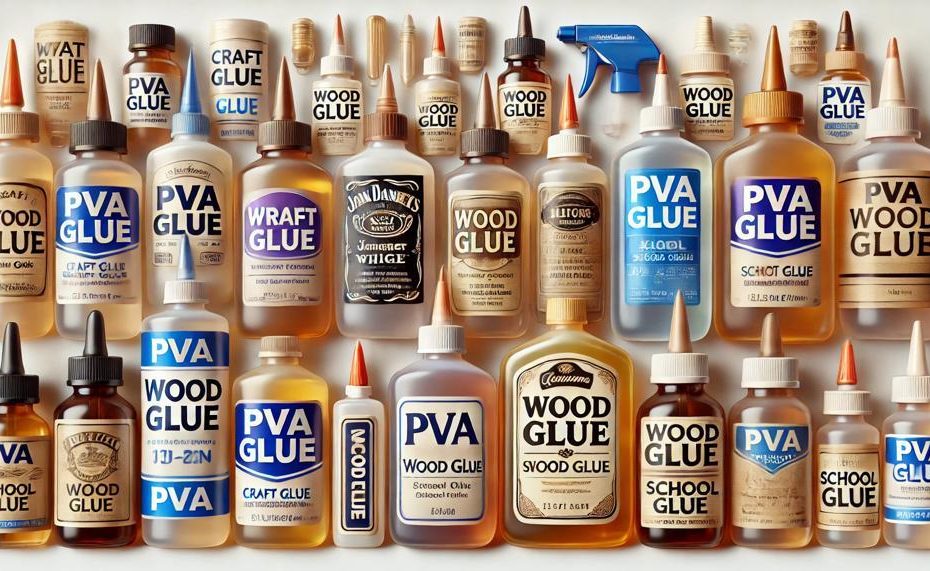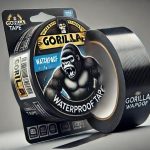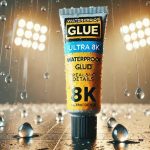Absolutely. PVA glue, short for Polyvinyl Acetate, is a versatile adhesive widely cherished for its effectiveness in bonding porous materials like wood, cardboard, and paper. Its affordability and non-toxic nature make it a staple in both professional woodworking and casual crafting.
But did you know there are various types of PVA glue tailored to different needs? Whether you’re a seasoned woodworker or a DIY craft enthusiast, understanding the nuances of each type can elevate your projects to new heights.
Table of Contents
Key Takeaways:
- Woodworking Grade PVA Glue: Typically yellow or tan, ideal for permanent wood bonding.
- Craft Grade PVA Glue: Usually white, perfect for arts and crafts projects.
- Specialty Glues:
- Titebond III: Waterproof with enhanced strength for outdoor projects.
- Elmer’s Carpenter’s Wood Glue Max: Contains wood particles for extra load-bearing strength.
- Clear Gorilla Glue: Quick-setting with a strong bond.
- Mod Podge: Versatile adhesive suitable for various surfaces.
This article dives into these types, highlighting their unique properties and best-use scenarios, ensuring you pick the right glue for your next masterpiece. Let’s get stuck into the details.
The Benefits of Using PVA Glue
The benefits of using PVA glue compared to other adhesives are significant. Let’s explore these advantages in detail:
Versatility
PVA glue bonds a diverse range of materials such as wood, paper, fabric, and certain plastics, making it ideal for multiple applications from arts and crafts to household repairs. Its adaptability makes it a cost-effective option, as a single bottle can serve numerous purposes.
Ease of Use
PVA glue is incredibly user-friendly. Unlike other adhesives that may require special equipment or techniques, it can be applied using a simple brush or spreader.
It offers a longer working time, allowing users to make adjustments before it sets completely.
Strong Bonding Strength
When used correctly, PVA glue forms a robust and durable bond between materials. This characteristic makes it suitable for projects that demand a strong hold, like furniture repairs or model construction.
Non-Toxic and Safe
PVA glue is non-toxic, making it safe for use by both adults and children. This quality makes it popular for school projects and crafts involving kids.
Additionally, as it is water-based and free from harmful chemicals, it is environmentally friendly.
Long Shelf Life
When stored properly, PVA glue maintains its effectiveness for extended periods. This longevity ensures that users can keep it on hand for occasional use without worrying about it losing potency.
Cost-Effectiveness
Due to its versatility and the wide range of materials it can bond, PVA glue is economical. It negates the need to purchase multiple types of adhesives for different projects.

Different Types of PVA Glue and Their Uses
PVA (polyvinyl acetate) glue is an incredibly versatile adhesive, and various types are tailored for specific applications. Here are the main types of PVA glue and their distinct uses:
| Type of PVA Glue | Description | Specific Uses |
| White Glue | Also known as school glue, this water-based adhesive dries clear and is non-toxic. | Ideal for paper, cardboard, and other porous materials. Commonly used in arts and crafts, school projects, and light household repairs. |
| Yellow Carpenter’s Glue | Known as wood glue or carpenter’s wood glue, it has a stronger bond and dries to a yellowish color. | Best for woodworking projects, such as furniture assembly, cabinetry, and wooden crafts. Its color helps blend with wood surfaces. |
| Waterproof PVA Glue | Formulated to resist water and moisture, making it suitable for outdoor projects. | Used in outdoor furniture, decking, and any project exposed to the elements. It can withstand extreme temperatures and moisture. |
| Fabric Glue | Specifically designed to bond fabric materials without causing damage. | Perfect for textile projects like hemming, patching, and crafting with fabric. |
| Paper Glue | Has a higher viscosity, making it ideal for paper-based applications. | Commonly used in bookbinding, scrapbooking, and other detailed paper crafts. |
Each type of PVA glue offers unique benefits tailored to specific tasks. Choosing the right type ensures strong, durable bonds suited to your project’s needs.
Tips for Properly Applying PVA Glue
Applying PVA glue can be straightforward, but avoiding common mistakes ensures a strong, clean bond.
| Common Mistake | Description | Solution |
| Rushing the Process | Leads to weak bonds and messy results. | Allow each step to take its full duration. |
| Improper Workspace Preparation | Dusty or wet surfaces hinder bonding. | Ensure surfaces are clean and dry. |
| Incorrect Amount of Glue | Too much or too little glue affects bonding. | Apply an even, thin layer. |
| Not Clamping Surfaces | Weak bonds due to insufficient pressure. | Clamp pieces tightly until glue dries. |
| Using on Inappropriate Surfaces | PVA glue doesn’t bond well with plastic. | Use on porous materials only. |
| Not Wearing Gloves | Glue can be messy and stick to skin. | Wear gloves to keep hands clean. |
| Improper Storage | Glue can dry out or lose effectiveness. | Store in a cool, dry place with a tightly sealed cap. |
| Ignoring Instructions | Can lead to suboptimal performance. | Follow manufacturer’s guidelines. |
| Over-diluting with Water | Weakens adhesive properties. | Add water sparingly if necessary. |
Common Mistakes to Avoid When Using PVA Glue
Common mistakes to avoid when using PVA glue to ensure the best results include improper surface preparation, overuse of glue, skin contact, insufficient drying time, and incorrect application methods. Here are detailed explanations:
| Common Mistake | Explanation | Solution |
| Not Preparing the Surface Properly | Applying PVA glue on dirty or oily surfaces can prevent a strong bond. | Ensure the surfaces are clean and dry before applying glue. Use a mild cleaner if necessary. |
| Using Too Much Glue | Excess glue can ooze out and weaken the bond, making the connection less effective. | Apply a thin, even layer of glue to avoid excess. Remember, less is often more. |
| Spilling Glue on Your Skin | PVA glue can bond skin together, causing discomfort and potential injury. | Wear protective gloves and wash off any spills immediately with warm soapy water. |
| Not Allowing Enough Drying Time | Rushing the drying process can result in a weak bond. | Allow adequate drying time as recommended by the manufacturer, typically 24 hours. |
| Applying Glue on Only One Side of the Joint | This can lead to uneven bonding and weaker adhesion. | Always apply glue to both surfaces to ensure a strong, even bond. |
Proper application of PVA glue involves careful attention to these details to achieve a durable and effective bond.
Can PVA Glue Be Used to Repair Denim Jackets?
Absolutely, PVA glue can indeed be used to repair denim jackets. Various types of PVA glue cater to specific needs, ensuring the repair is effective and durable.
Different Types of PVA Glue for Repairing Denim Jackets
| Type of PVA Glue | Description | Use Case |
| White PVA Glue | This common PVA adhesive is water-based, non-toxic, and dries clear. Known for its strong bond with most fabrics. | Perfect for repairing ripped seams or attaching patches. Its clear drying nature ensures neat and clean repairs. |
| Clear PVA Glue | Similar to white PVA glue but dries transparent. Offers the same strong bond without any visible residue. | Ideal for light-colored denim or designs where visibility of glue should be minimal. Ensures a seamless finish. |
| Fabric PVA Glue | Specially formulated for fabrics, this glue is thicker and allows more adjustment time before setting. | Best for heavy-duty repairs and areas that will undergo frequent washing. Its washability ensures the bond remains strong over time. |
| Waterproof PVA Glue | This variant is water-resistant, maintaining its bond strength even when exposed to moisture. | Suitable for denim jackets worn in outdoor activities or rainy weather. Ensures durability despite exposure to elements. |
| Fast-Drying PVA Glue | Formulated to set quickly, reducing waiting time without compromising bonding strength. | Great for quick fixes like attaching buttons or small patches. Ideal for urgent repairs where time is of the essence. |
Understanding these types of PVA glue helps in selecting the right one for specific denim jacket repairs. From ensuring a strong bond with white PVA glue to securing a waterproof fix with the waterproof variant, each type offers unique benefits tailored to different repair needs.
Conclusion
PVA glue, or Polyvinyl Acetate, comes in various forms, each catering to specific needs. This versatile adhesive is beloved for its efficiency and ease of use, making it indispensable for both professional woodworkers and casual crafters.
There are several types of PVA glue to choose from. Woodworking grade PVA glue, often yellow or tan, is perfect for permanent wood bonding. Craft grade PVA glue, usually white, excels in arts and crafts projects. Specialty variants like Titebond III, Elmer’s Carpenter’s Wood Glue Max, Clear Gorilla Glue, and Mod Podge offer unique properties such as waterproofing, enhanced strength, quick setting, and multi-surface adhesion, respectively.
PVA glue’s advantages are numerous: it bonds a wide range of materials, is non-toxic, easy to use, and offers strong, durable adhesion. Additionally, it boasts a long shelf life and is cost-effective, making it a staple in any workshop or craft room. Choosing the right type of PVA glue for your project ensures optimal results, transforming your DIY endeavors into professional-quality creations.






